The Phison E12 Reference Design Preview: A Next-Gen NVMe SSD Controller
by Billy Tallis on July 18, 2018 10:30 AM ESTAnandTech Storage Bench - The Destroyer
The Destroyer is an extremely long test replicating the access patterns of very IO-intensive desktop usage. A detailed breakdown can be found in this article. Like real-world usage, the drives do get the occasional break that allows for some background garbage collection and flushing caches, but those idle times are limited to 25ms so that it doesn't take all week to run the test. These AnandTech Storage Bench (ATSB) tests do not involve running the actual applications that generated the workloads, so the scores are relatively insensitive to changes in CPU performance and RAM from our new testbed, but the jump to a newer version of Windows and the newer storage drivers can have an impact.
We quantify performance on this test by reporting the drive's average data throughput, the average latency of the I/O operations, and the total energy used by the drive over the course of the test.
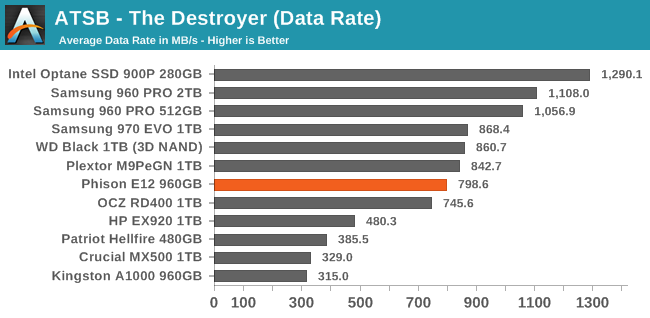
Starting off, the Phison E12 delivers a much higher average data rate on The Destroyer than their previous controllers, but it's not quite enough to match the top TLC-based drives on the market. Even the Plextor M9Pe with its aging Marvell 88SS1093 controller is a bit faster. On the other hand, the HP EX920 shows that Silicon Motion also has a lot of catching up to do with their next controller.
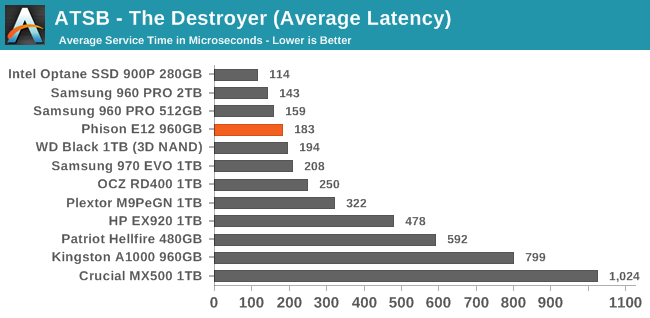
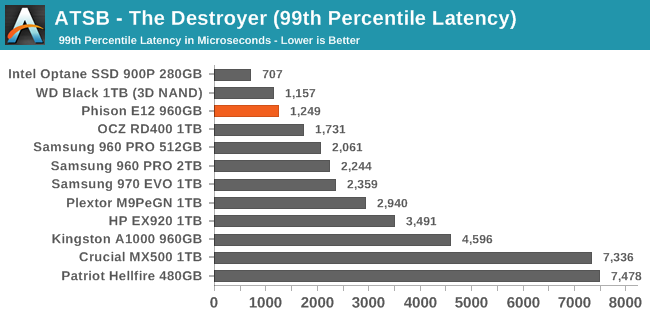
Average and 99th percentile latencies from the Phison E12 are among the best we've seen from a TLC-based SSD. Premium drives using 3D MLC or Intel's Optane SSDs can be a bit better, but with even 99th percentile latency approaching 1ms for TLC drives, there's not much room left for meaningful improvement on these scores.
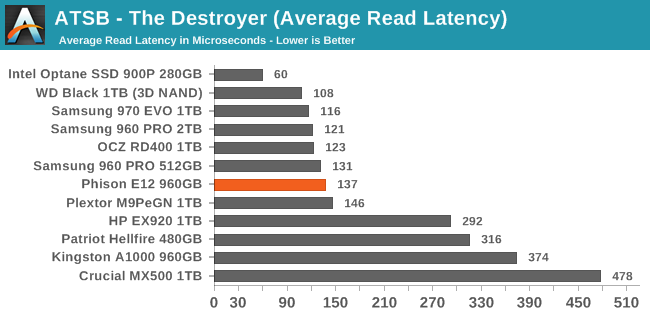
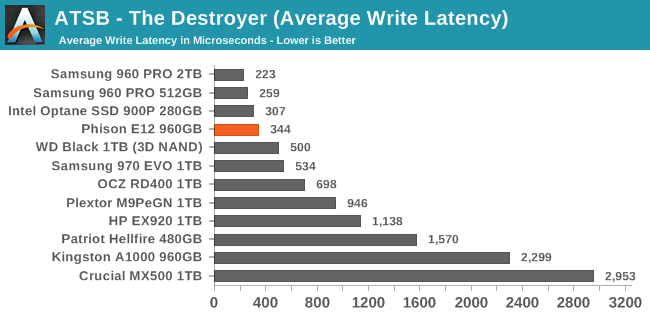
The average read latency from the Phison E12 is similar to most other high-end SSDs, but the average write latency is better than any other TLC-based SSD.
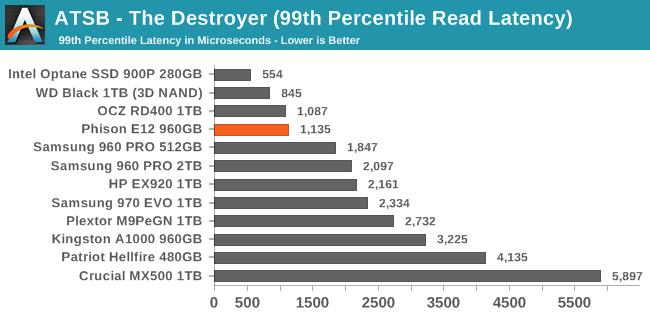
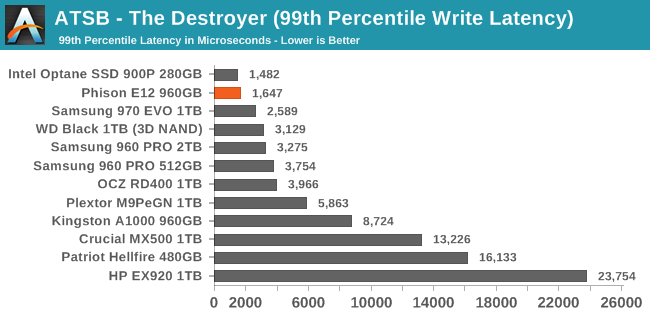
The Phison E12 turns in great scores for both 99th percentile read and write latency. The write latency particularly stands out, and it is clear that the E12 behaves well under pressure.
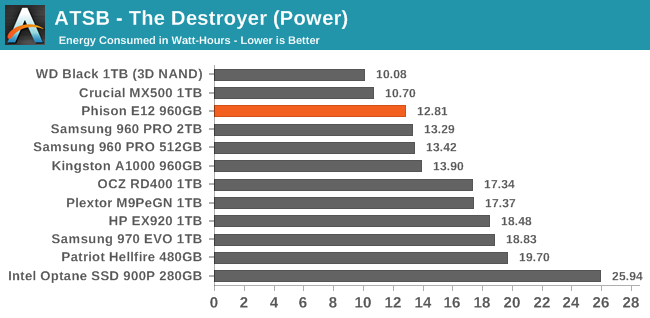
The Phison E12 uses far less energy on The Destroyer than the previous-generation E7-based Patriot Hellfire, and is a bit more efficient than the slower but lower-power E8-based Kingston A1000. The WD Black still holds a significant lead in power efficiency over all the other NVMe drives, but the E12 is making some progress toward that goal.










28 Comments
View All Comments
DigitalFreak - Wednesday, July 18, 2018 - link
Another high end competitor is always a welcome site. Hopefully it will push prices down further.Mikewind Dale - Wednesday, July 18, 2018 - link
And that idle power consumption is great. Looks like we have a great SSD for laptops.Amoro - Wednesday, July 18, 2018 - link
Wonder why they didn't use DDR4L?FATCamaro - Wednesday, July 18, 2018 - link
All DDR4 is the same. There are only improvements in LPDDR4 which I haven’t seen anywhere yetIII-V - Wednesday, July 18, 2018 - link
DDR4L operates at a lower voltage, and consumes 80% of the power of DDR4. Where LPDDR shines is with standby power, which is far lower than DDR4 and DDR4L.bug77 - Wednesday, July 18, 2018 - link
For laptops, SATA will always be the less power hungry choice.Death666Angel - Thursday, July 19, 2018 - link
If you can do more tasks in the same amount of time, I think a lot of people will not mind a fractional increase in power consumption. How much of a fraction is the SSD power consumption on modern laptops anyway? LCD should still be #1 over the course of a full battery charge.bug77 - Thursday, July 19, 2018 - link
It's about idle power. It's higher on PCIe.And you can rarely get more things done on a NVMe drive, 4k random reads are only slightly better than AHCI. And 4k random reads is what you do most of the time ;)
Lolimaster - Thursday, July 19, 2018 - link
And unless you want a desktop replacement laptop nvme makes very little sense for 95% of the users (5% being 4k video editiors).bug77 - Friday, July 20, 2018 - link
There could be that some laptops only have M2 slots for expansion?